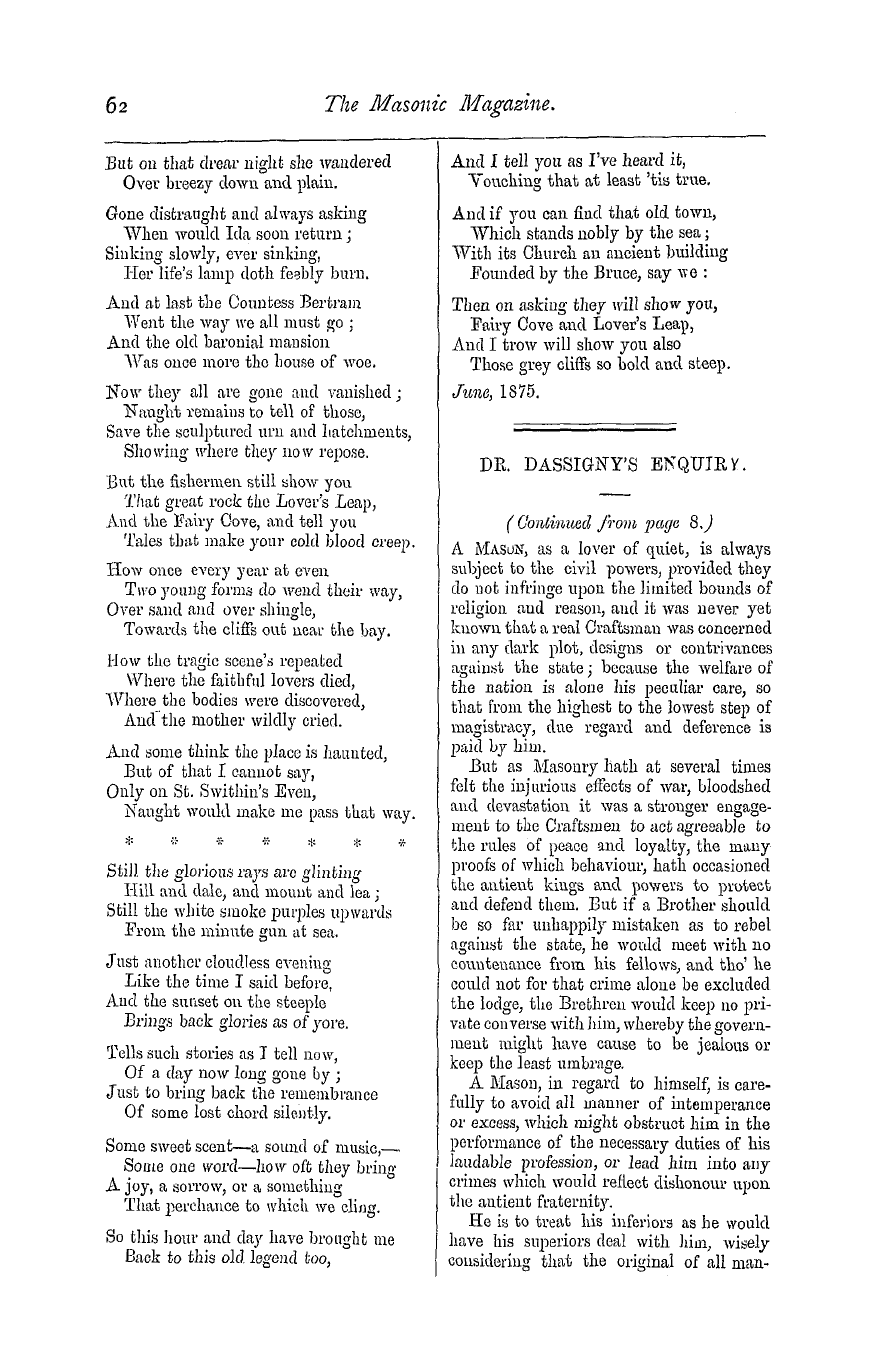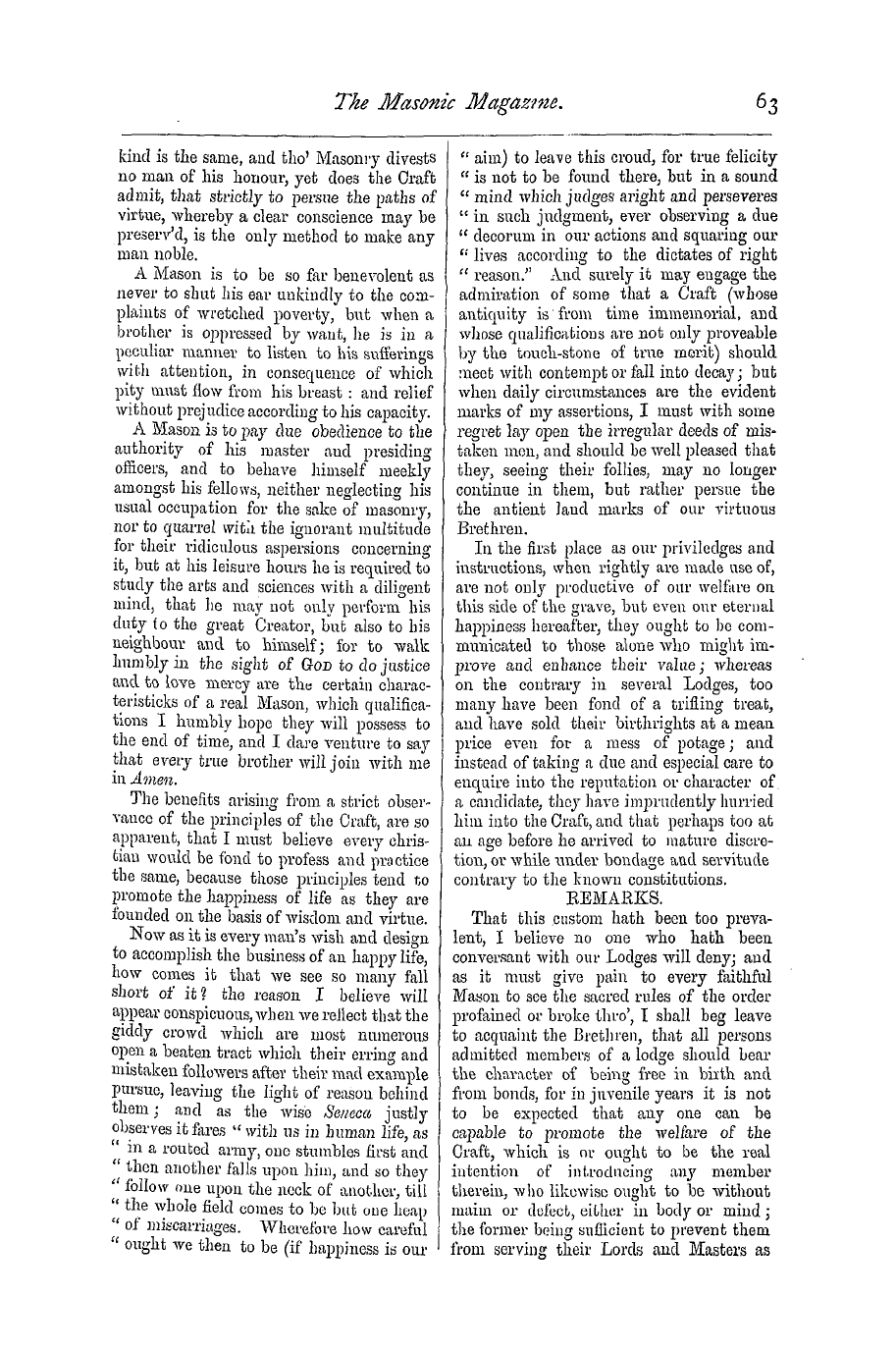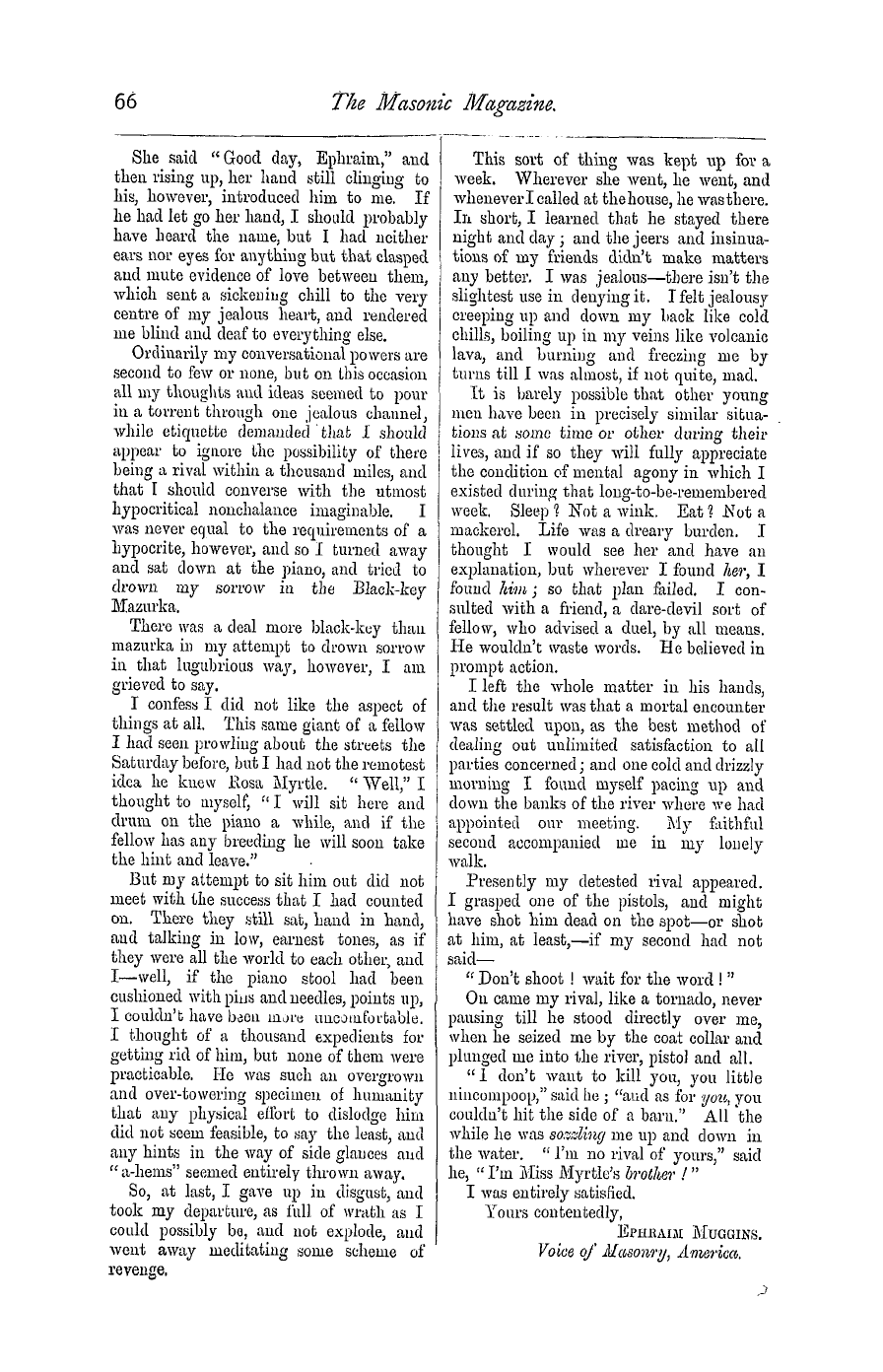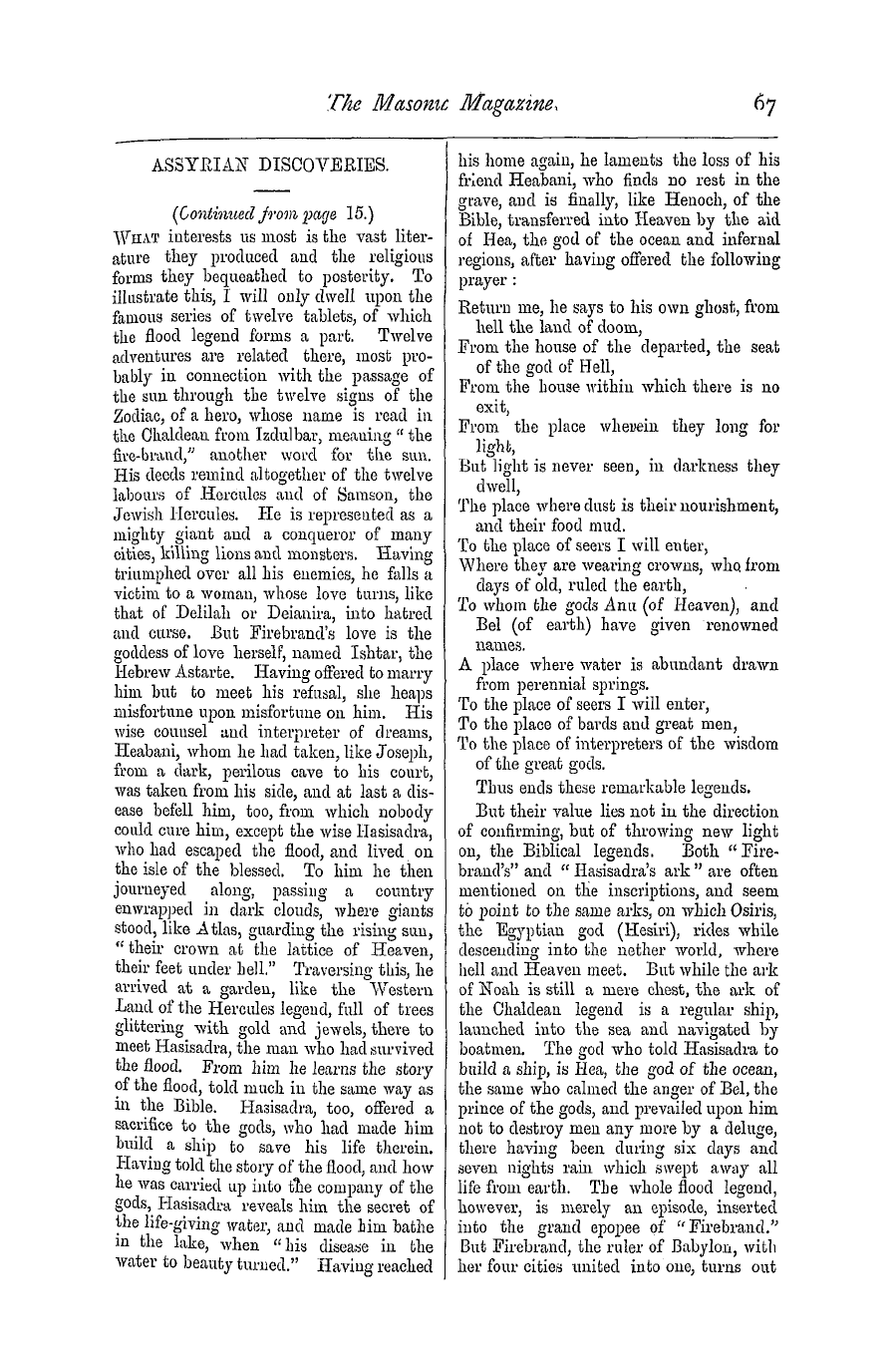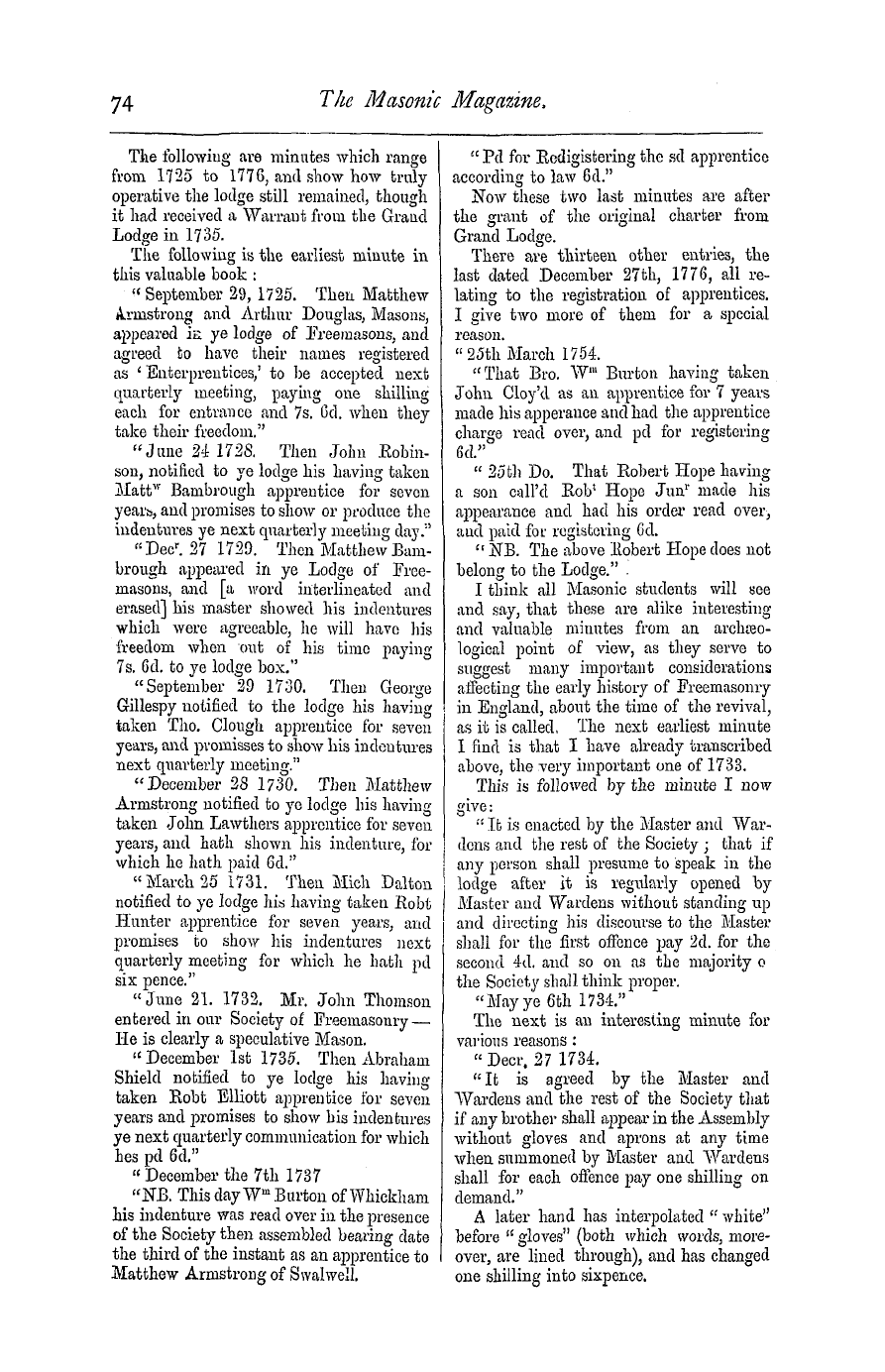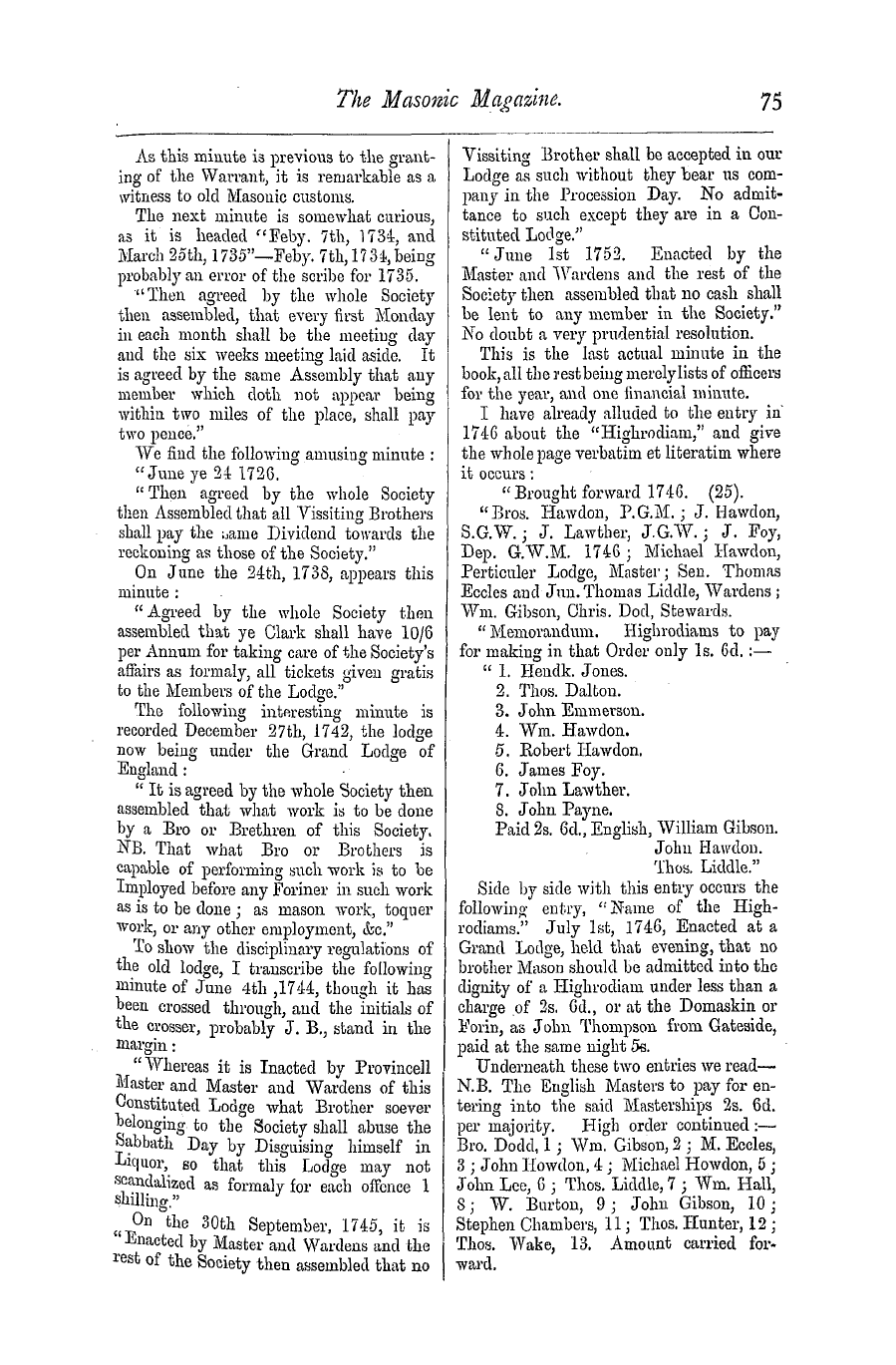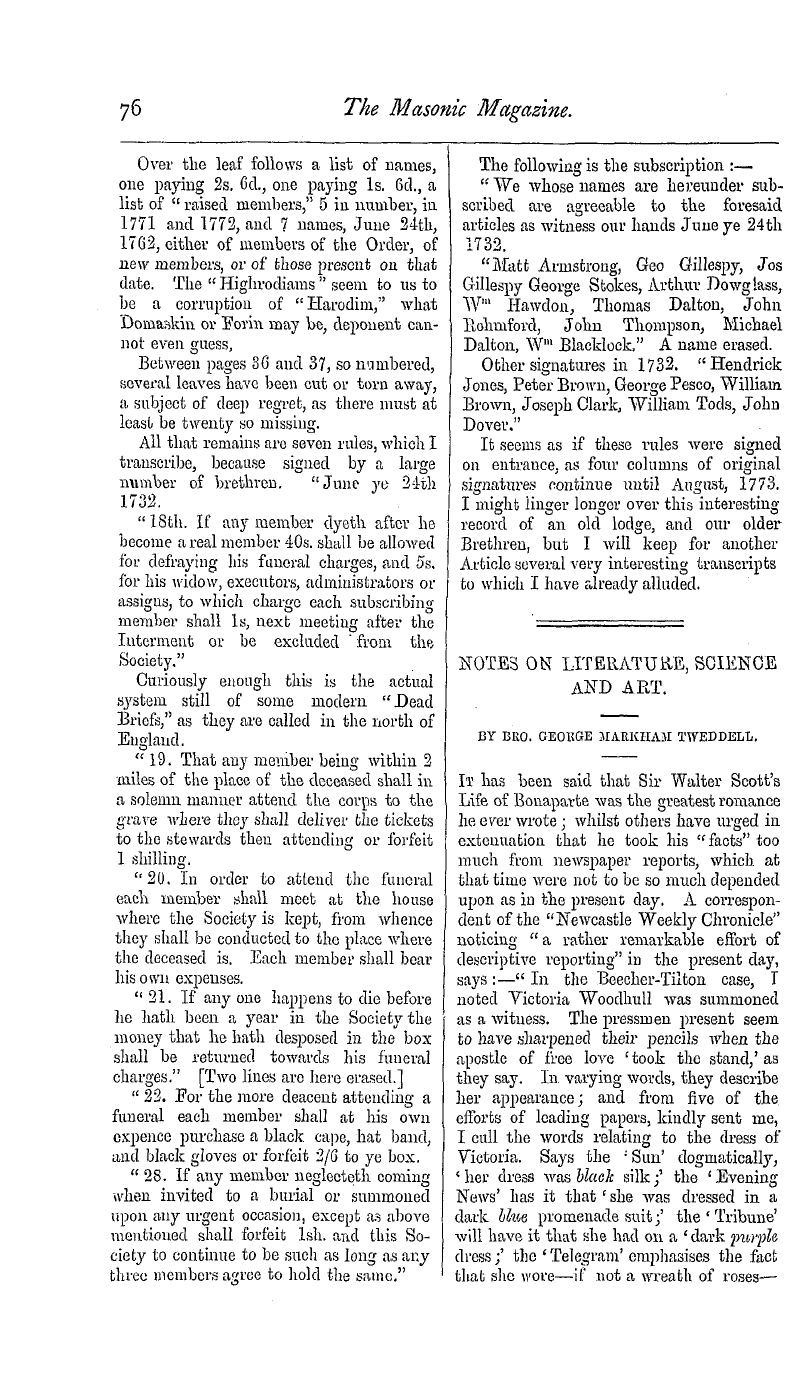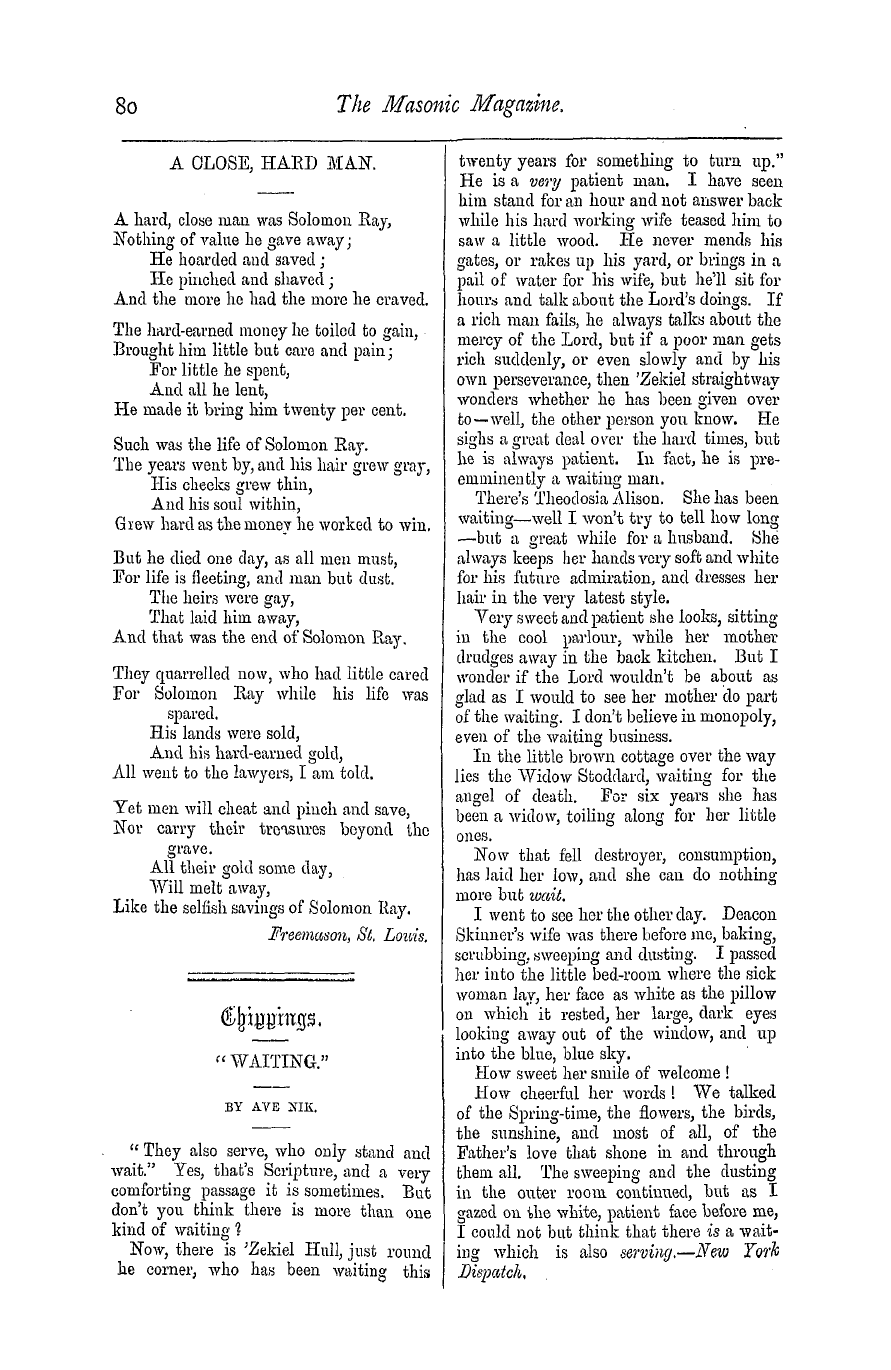-
Articles/Ads
Article HOMERIC TROY. ← Page 4 of 4 Article HOMERIC TROY. Page 4 of 4 Article THE MASON'S DAUGHTER. Page 1 of 2 →
Note: This text has been automatically extracted via Optical Character Recognition (OCR) software.
Homeric Troy.
Dr . Schliemann ' s discoveries , and the details of the Homeric poem , in almost ei'ery point on Avhich I have bad the opportunity of instituting a comparison , there is a wonderful precise correspondence between the facts of the poem , and the evidence afforded by the objects which he has discovered in the recesses he has unveiled .
One of the most important pieces of evidence is that which relates to the use of metals , and in this great department , tbe discoA'eries correspond with the representations of Homer . It is undoubted that Dr . Schliemann has discovered objects manufactured of copperAvhileon the
, , other hand , he has not found a trace of iron in Troy . I am not quite certain from my recollection of tbe text UOAV , but clo not think Homer ever speaks of the use of iron at Troy . He speaks of iron in his own time , but as a thing so extremely rare
and valuable as to approach . in character the precious metals . Again , with respect to its non-appearance among Dr . Schliemann ' s objects , we must boar in mind that it is an extremely perishable metal Avben exposed to the influence of corrosion , and it would not , therefore , be surprising if every foot of the site were turned up , that no iron relics should be discovered . Then .
again , with regard to pottery , Dr . Schliemann tells us that in this third pre-historic city , which he takes to be the city of Priam , the pottery Avas generally hand-made , but that he found in that city a certain number of plates which were made by the potter ' s wheelIf that is soit is evident
. , that the potter ' s Avheel was just beginning to be used , ancl , we may assume , that it had not yet been employed in producing works of art . This , I think , is in precise correspondence Avith the stageof the potter ' s art as Ave find it in Homerwho onljust
, y mentions the potter ' s wheel , but does not refer to any work of art , or even any object —certainl y to no important object—of pottery . There are a large number of points to which it is impossible now to refer ; but I am bound to confess that I do not
think it will be possible to thrust back the period of the existence of Troy to an antiqu-t y so remote as that suggested by L » r . Schliemann . First , the evidence of the poem is against it . One of tbe principal of Homer ' s genealogies—which really conveys his idea of history , for he had no knowled ge of chronology—is that of the
Homeric Troy.
family of Priam ; and this gives Dardauus as the founder six generations before Priam ancl the Trojan war . Consequently , six generations before that Avar there Avas no Troy . Now , Dardanus ' s name is found in Egyptian inscriptions whose chronology has now attained a considerable degree of
fixity , of the time of the nineteenth Egyptian dynasty , which may be stated to have begun somewhere about the fifteenth century before Christ . The accesssion of Barneses II . may be placed about half a century afterwards , or say at the beginning
of the fifteenth century before Christ . That , however , will not be quite long enough for the purposes of Dr . Schliemann . It is a curious fact that , according to the Egyptian inscriptions , the time of the reign of Sesostris , or Rameses II ., Avas the time when there Avas a strong combination of the Assyrians and Khita , or Hittites ,
which included the Lychnis , Mcesians , the Dardanians , and the people of Asia Minor , to check Egyp tian power . Therefore , in the fifteenth century before Christ the name of the Dardanians still was in possession of the Plain of Troas , and Troy did not yet existbecause afterwards their
, historical names are blended . It is , therefore , quite plain that you cannot undertake to throw back the Troy of Priam to such a remote antiquity as Dr . Schliemann is disposed to claim for it , and I think that if be gets an antiquity of
1 , 300 oi 1 , 400 years before Christ he ought to be very well satisfied . ( Laughter and " hear , hear . " ) Tbe right hon . gentleman concluded by congratulating the Society that light was now beginning to pierce the thick mist which had hitherto obscured such remote subjects of antiquarian research , and by a renewed eulogy of the labours of Dr . Schliemann .
Mr . Gladstone resumed bis seat amid loud and prolonged applause , and a cordial vote of thanks to Dr . Schliemann having been carried with enthusiasm , tbe meeting closed . — The ' fillies .
The Mason's Daughter.
THE MASON'S DAUGHTER .
Art thou an angel from above , That youthful hearts to thee make love 1 Hast thou e ' en come to tempt youth all , From single blessedness to fall 1
Note: This text has been automatically extracted via Optical Character Recognition (OCR) software.
Homeric Troy.
Dr . Schliemann ' s discoveries , and the details of the Homeric poem , in almost ei'ery point on Avhich I have bad the opportunity of instituting a comparison , there is a wonderful precise correspondence between the facts of the poem , and the evidence afforded by the objects which he has discovered in the recesses he has unveiled .
One of the most important pieces of evidence is that which relates to the use of metals , and in this great department , tbe discoA'eries correspond with the representations of Homer . It is undoubted that Dr . Schliemann has discovered objects manufactured of copperAvhileon the
, , other hand , he has not found a trace of iron in Troy . I am not quite certain from my recollection of tbe text UOAV , but clo not think Homer ever speaks of the use of iron at Troy . He speaks of iron in his own time , but as a thing so extremely rare
and valuable as to approach . in character the precious metals . Again , with respect to its non-appearance among Dr . Schliemann ' s objects , we must boar in mind that it is an extremely perishable metal Avben exposed to the influence of corrosion , and it would not , therefore , be surprising if every foot of the site were turned up , that no iron relics should be discovered . Then .
again , with regard to pottery , Dr . Schliemann tells us that in this third pre-historic city , which he takes to be the city of Priam , the pottery Avas generally hand-made , but that he found in that city a certain number of plates which were made by the potter ' s wheelIf that is soit is evident
. , that the potter ' s Avheel was just beginning to be used , ancl , we may assume , that it had not yet been employed in producing works of art . This , I think , is in precise correspondence Avith the stageof the potter ' s art as Ave find it in Homerwho onljust
, y mentions the potter ' s wheel , but does not refer to any work of art , or even any object —certainl y to no important object—of pottery . There are a large number of points to which it is impossible now to refer ; but I am bound to confess that I do not
think it will be possible to thrust back the period of the existence of Troy to an antiqu-t y so remote as that suggested by L » r . Schliemann . First , the evidence of the poem is against it . One of tbe principal of Homer ' s genealogies—which really conveys his idea of history , for he had no knowled ge of chronology—is that of the
Homeric Troy.
family of Priam ; and this gives Dardauus as the founder six generations before Priam ancl the Trojan war . Consequently , six generations before that Avar there Avas no Troy . Now , Dardanus ' s name is found in Egyptian inscriptions whose chronology has now attained a considerable degree of
fixity , of the time of the nineteenth Egyptian dynasty , which may be stated to have begun somewhere about the fifteenth century before Christ . The accesssion of Barneses II . may be placed about half a century afterwards , or say at the beginning
of the fifteenth century before Christ . That , however , will not be quite long enough for the purposes of Dr . Schliemann . It is a curious fact that , according to the Egyptian inscriptions , the time of the reign of Sesostris , or Rameses II ., Avas the time when there Avas a strong combination of the Assyrians and Khita , or Hittites ,
which included the Lychnis , Mcesians , the Dardanians , and the people of Asia Minor , to check Egyp tian power . Therefore , in the fifteenth century before Christ the name of the Dardanians still was in possession of the Plain of Troas , and Troy did not yet existbecause afterwards their
, historical names are blended . It is , therefore , quite plain that you cannot undertake to throw back the Troy of Priam to such a remote antiquity as Dr . Schliemann is disposed to claim for it , and I think that if be gets an antiquity of
1 , 300 oi 1 , 400 years before Christ he ought to be very well satisfied . ( Laughter and " hear , hear . " ) Tbe right hon . gentleman concluded by congratulating the Society that light was now beginning to pierce the thick mist which had hitherto obscured such remote subjects of antiquarian research , and by a renewed eulogy of the labours of Dr . Schliemann .
Mr . Gladstone resumed bis seat amid loud and prolonged applause , and a cordial vote of thanks to Dr . Schliemann having been carried with enthusiasm , tbe meeting closed . — The ' fillies .
The Mason's Daughter.
THE MASON'S DAUGHTER .
Art thou an angel from above , That youthful hearts to thee make love 1 Hast thou e ' en come to tempt youth all , From single blessedness to fall 1























